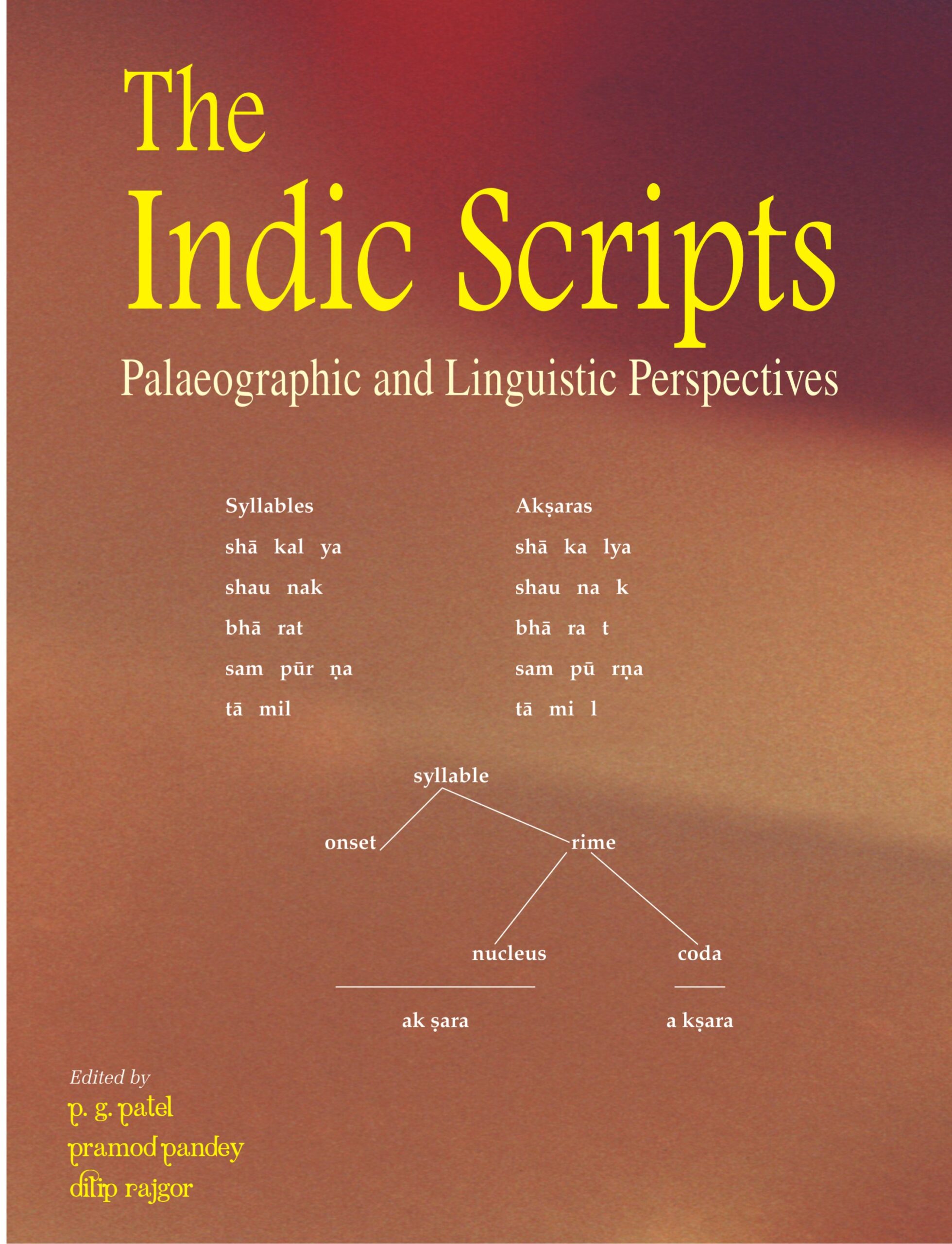

Indic Scripts...
Indic Scripts
Palaeographic and Linguistic Perspectives by: P.G. Patel , Pramod Pandey , Dilip RajgorThis Volume is the first attempt to cross-fertilize palaeography and linguistics in the ongoing research on Brahma and its daughter scripts used in the present-day India. The palaeographic papers cover the main issues in the decipherment of the Indus Valley script, and the linguistic papers explore the issues of the roots of the orthographic unit akshara in Vedic phonetics. Palaeographers epigraphists, linguists and computational scientists, will find this volume interesting and useful.
Original price was: ₹1,400.00.₹1,260.00Current price is: ₹1,260.00.
ISBN: 9788124604069
Year Of Publication: 2007
Edition: 1st
Pages : xiii, 266
Bibliographic Details : Indices
Language : English
Binding : Hardcover
Publisher: D.K. Printworld Pvt. Ltd.
Size: 25
Weight: 900
This volume presents the advances in the ongoing research on Brahmi and its daughter scripts used in the present day India. It brings together two main trends: evolutionary-historical development and linguistic grounding. This is the first attempt to cross-fertilize palaeography and linguistics. The palaeographic papers cover the main issues in the decipherment of the Indus Valley script, the origin and evolution of Brahmi, and the palaeographic methods and considerations employed in the decipherment of scripts. These present different trends and arguments of writers on the origin of Brahmi as having been around the Mauryan era or at a much earlier stage, relate to broader historical and cultural issues. They also deal with the need for the use of established and more current palaeographic techniques in classifying regional and stylistic variants of scripts. The linguistic papers in the volume explore the issues of the roots of the orthographic unit aksara in Vedic phonetics, its claim as a minimal articulatory phonetic unit, and the properties of Brahmi as a generative writing system. The philosophical and linguistic underpinning of the concept aksara is shown to thread its use in the varieties of treatises, from the Vedas to phonetic texts. The papers help in providing linguistic evidence for historical accounts of the script as an invention at a given time or as an evolving evolutionary system, apart from relating the development of the script to the linguistic history of India. Palaeographers epigraphists, linguists and computational scientists, will find this volume interesting and useful.
Preface
Acknowledgement
Key to Transliteration
Introduction
1. Aum : Aksara in Indian Thought
— Kapil Kapoor
2. On the origin of the Early Indian Scripts
— Richard Salomon
3. Typological Observations on the Indic Scripts and their Relationship with Other Alphasyllburies
— Richard Salomon
4. The art of Writing at the Time of the Pillar Edicts of Ashoka
— Harry Falk
5. Evolution of Early Writing in India
— Subhash C. Kak
6. Progress of Modification of Brahmi Alphabet: As Revealed by Inscriptions of Sixth-Eighth Centuries
— A.K. Singh
7. The So-Called Shankha-Lipi (Shell Script)
— B.N. Mukherjee
8. Evolution of Brahmi Script: A Linguistic Approach
— Dilip Rajgor
9. Brahmi Manuscript Palaeography
— Andrew Glass
10. Akshara as a Linguistic Unit in Brahmi Scripts
— Purushottam G. Patel
11. Akshara as the Minimal Articulatory Unit
— Pramod Pandey
12. Phonological and Generative Aspects of Brahmi and its Derivatives
— Pramod Pandey
The Contributors
List of Sanskrit Terms
List of Inscriptions and Place Names
List of Languages
Author Index
Subject Index







